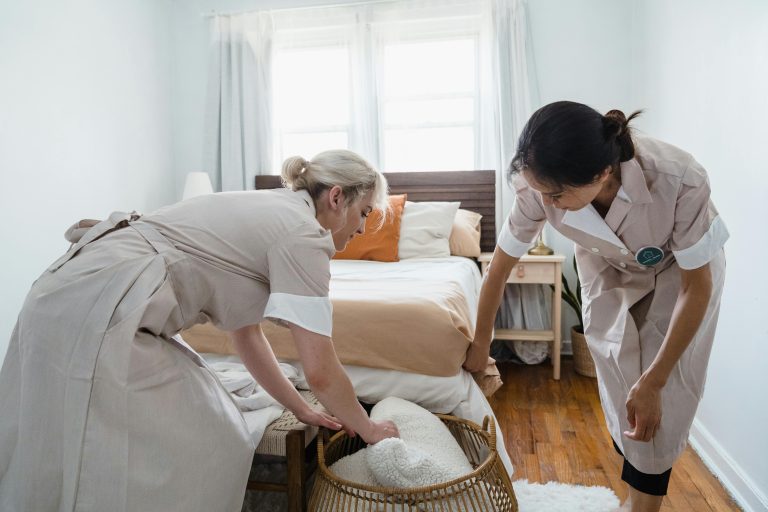SR-410 hums, the White River meanders, and neighborhoods from Lake Tapps to downtown Sumner blend small-town pace with busy corridors. When something goes wrong—a burst pipe at 2 a.m., a sewage backup after a storm, a trauma incident in a stairwell—there isn’t time to Google your way through it. Emergency trauma cleanup is about acting fast, containing risk, and restoring safe use of a space with as little disruption as possible. This guide focuses on the Bonney Lake–Sumner area and the situations where professional, rapid-response cleanup makes the difference between a contained incident and a cascading, costly problem.
What “emergency cleanup” means (and what it doesn’t)
Emergency cleanup is the immediate response to hazardous or rapidly worsening conditions that threaten health, property, or operations. In and around Bonney Lake and Sumner, the most common triggers include:
- Category 3 water (sewage/contaminated water) intrusions from sewer line backups, toilet overflows, or floodwater entering structures.
- Trauma and medical incidents that leave blood or bodily fluids in homes, businesses, or common areas (after the scene has been released by authorities).
- Sharps and drug residue discoveries in bathrooms, stairwells, parking areas, and vacant units (once the area is safe and cleared by law enforcement if required).
- Burst pipes and sprinkler discharges that saturate drywall, insulation, and flooring—often overnight or during cold snaps.
- Vehicle-into-building impacts that scatter debris, contaminants, and glass into customer areas or living spaces.
- Refrigeration or food-service failures that leave spoiled product and odor problems that can shut down operations.
What it’s not: routine housekeeping, scheduled projects, or long-term decluttering. If the situation is hazardous, fast-moving, or could spread through a building via air or water pathways, it’s an emergency cleanup.
Why speed matters along the SR-410 corridor
Local conditions shape risk. Multi-unit housing, small business storefronts, and large warehouse/industrial footprints around Sumner create shared walls and shared air. Moist, cool weather helps odors and bacteria linger. Concrete slabs and crawlspaces common in the area wick moisture laterally, so what looks like a small spill at 8 a.m. can be a subfloor problem by lunch. Quick, professional action limits:
- Pathogen exposure (bloodborne pathogens, fecal bacteria, aerosolized contaminants).
- Structural damage (drywall collapse, subfloor rot, delamination).
- Business interruption (lost revenue, failed health inspections).
- Neighbor impact (odors and contaminants traveling to adjacent units via HVAC or building cavities).
First hour playbook for residents and managers
When an emergency hits, your first hour sets the tone. Use this tactical sequence:
- Ensure life safety first. Call 911 for medical, fire, or crime scene issues. Evacuate if there’s structural damage, strong chemical odors, or electrical hazards.
- Isolate the area. Keep people and pets out. Close doors, post a quick note, and—if safe—switch HVAC off to stop cross-contamination.
- Shut off sources. If water is running, close the nearest shutoff. If a toilet overflowed, stop the supply valve behind it. Do not operate electrical switches in wet areas.
- Do not self-clean hazardous materials. Avoid bleach on biohazards or sewage; it can create harmful fumes and set stains without true decontamination. Skip fans on Category 3 water—they spread aerosols.
- Document briefly. A few wide photos and a quick timestamp help with insurance. Then put the phone away and focus on control.
- Contact a professional emergency cleanup team. Ask for same-day dispatch, a written scope, and clear safety controls.
- Notify stakeholders. Property management, tenants, or adjacent businesses may need temporary access changes or alternate routes.
What professionals do in the first two hours
A competent emergency cleanup team isn’t just a truck with mops. Expect:
- Arrival and hazard assessment. Technicians arrive with appropriate PPE and meters (moisture, ATP hygiene, VOC/odor). They verify the scene is cleared by authorities if applicable.
- Site control. They establish containments with plastic and negative air if needed, lay floor protection, and set up “clean/dirty” pathways to keep unaffected areas pristine.
- Source control. Water shutoff, leak arrest, and debris stabilization occur immediately. For sewage, they’ll start extraction and remove bulk waste to stop wicking.
- Category classification. Water and biohazard levels are classified so the right disinfectants, dwell times, and removal rules apply.
- Targeted removal. Porous materials that can’t be sanitized (pad, some drywall, certain ceiling tiles) are cut back and bagged with chain-of-custody labeling for regulated disposal when necessary.
- Disinfection and verification. EPA-registered disinfectants with appropriate dwell times, followed by verification (e.g., ATP readings) to confirm surfaces are within safe thresholds.
- Air and odor management. HEPA filtration and negative air contain aerosols; hydroxyl or vapor-phase treatments address odor without masking.
- Documentation. You get photos, measurements, waste manifests (if biohazard), and a clear next-step plan—critical for insurers and tenants.
Scenarios you’ll actually see in Bonney Lake & Sumner
Sewage in a daylight basement near Lake Tapps. After heavy rainfall, a backup pushes Category 3 water into a finished lower level. Emergency crews extract, remove saturated pad and base trim, apply disinfection with contact time, cut drywall to a clean line, and set dry-out equipment under containment to keep aerosols out of the upstairs.
Blood spill on a common stairwell in downtown Sumner. After first responders transport the injured person and release the area, the cleanup team isolates the stairwell, treats and lifts blood from treads and risers, handles porous material appropriately, disinfects railings and touchpoints, and returns the stairwell to service quickly with documented PRV.
Sharps found behind a retail building off Main Street. Technicians conduct a sweep, use puncture-resistant containers, and disinfect touchpoints and hidden niches. If drug residue is suspected on interior surfaces, they perform testing and, if within scope, decontaminate; if not, they coordinate with appropriate authorities.
Sprinkler head break in a warehouse bay. Thousands of gallons soak packaging and MDF shelving. Rapid extraction, segregation of unsalvageable materials, elevated-temperature dehumidification, and targeted demolition prevent secondary mold amplification and get operations back online faster.
Apartment, HOA, and commercial specifics
Emergency cleanup in multi-family housing and commercial settings adds layers:
- Access and privacy. Work often proceeds after hours to reduce disruption. Unmarked vehicles and discreet uniforms help maintain privacy in close-knit neighborhoods.
- Egress and ADA. Stairwell or hallway closures require temporary signage and alternate pathways to maintain safe access.
- HVAC zones. Shared ductwork means temporary shutdowns or HEPA-filtered negative pressure to stop migration.
- Permits and disposal. Biohazardous waste must be packaged and transported by licensed vendors with manifests; sewage-impacted debris is handled per local rules.
- Communication cadence. Clear, timed updates to managers and tenants reduce anxiety and speed approvals for necessary demolition or access.
Weather, utilities, and the “secondary damage clock”
Our regional pattern—rain, occasional freeze, and shoulder-season humidity—means secondary damage starts fast. Within hours, contaminated water drives into base plates and seams; odors absorb into soft goods; and corrosion starts on electrical components. Power disruptions complicate things: without dehumidification, dry-out stalls. Professionals carry temporary power solutions and create drying chambers so progress continues even if the grid is shaky. The takeaway: the sooner the right controls are in place, the shorter (and cheaper) the overall recovery.
Choosing an emergency cleanup partner (a quick checklist)
- 24/7 live intake with real dispatch. Not just voicemail—someone who can mobilize a crew promptly.
- Safety program depth. Written respiratory protection program, fit testing, bloodborne pathogen training, and hazard communication.
- Regulated waste credentials. Access to licensed medical waste transporters; sharps handling protocols; trackable manifests.
- Moisture and hygiene verification. Meters, logs, and ATP or equivalent post-remediation verification—provided to you.
- Containment capability. Proper negative air machines, HEPA filtration, and pressure monitoring when needed.
- Insurance and documentation. COI on request, clear scopes and change orders, photo logs suitable for adjusters and auditors.
- Local familiarity. Experience with Pierce County permitting nuances, typical building assemblies in Bonney Lake/Sumner, and coordination with nearby restoration trades.
- Trauma-informed approach. Especially for medical and trauma scenes—compassionate communication matters.
Insurance, cost, and keeping downtime low
Many emergencies are insurable under homeowners, renters, or commercial policies—particularly sudden and accidental events (sprinkler discharge, pipe breaks, certain biohazard incidents after a covered loss). A good provider will:
- Photograph and diagram affected areas.
- Separate salvageable from unsalvageable items with justification.
- Provide line-item estimates and drying logs.
- Communicate directly with adjusters to align scope and speed approvals.
For businesses, continuity is everything. Ask about phased reopening (e.g., opening unaffected bays while one area remains under containment), alternate customer access routes, and odor-neutral work strategies so you can serve customers while remediation proceeds.
Coordination with first responders and authorities
In medical or crime-related events, respond in this order: 1) life safety and law enforcement, 2) scene release, 3) professional cleanup. For chemical spills or suspected clandestine lab contamination, defer to hazmat authorities; an emergency cleanup team can step in after clearance to decontaminate building materials and contents within their scope. The best vendors maintain respectful, efficient handoffs that keep you compliant and move you toward normalcy.
A ready-to-use checklist you can post today
- ☑ Emergency contacts: 911, building maintenance, water/electric shutoffs, preferred cleanup vendor
- ☑ Utility map: label main shutoffs and unit-level valves
- ☑ After-hours access: keys, codes, elevator permissions
- ☑ Tenant/employee notification template for temporary closures
- ☑ Staging area policy for debris and equipment (keep exits clear)
- ☑ Photo log protocol (who, where stored, privacy expectations)
The bottom line
In Bonney Lake, Sumner, and the neighboring communities, emergency cleanup isn’t an occasional curiosity—it’s a critical, behind-the-scenes service that keeps homes livable and businesses open. When minutes matter, the right team sets containment, neutralizes hazards, and documents everything so you can move forward with confidence. Prepare your first-hour playbook now, choose a qualified partner, and you’ll turn a stressful surprise into a manageable, well-documented recovery.


